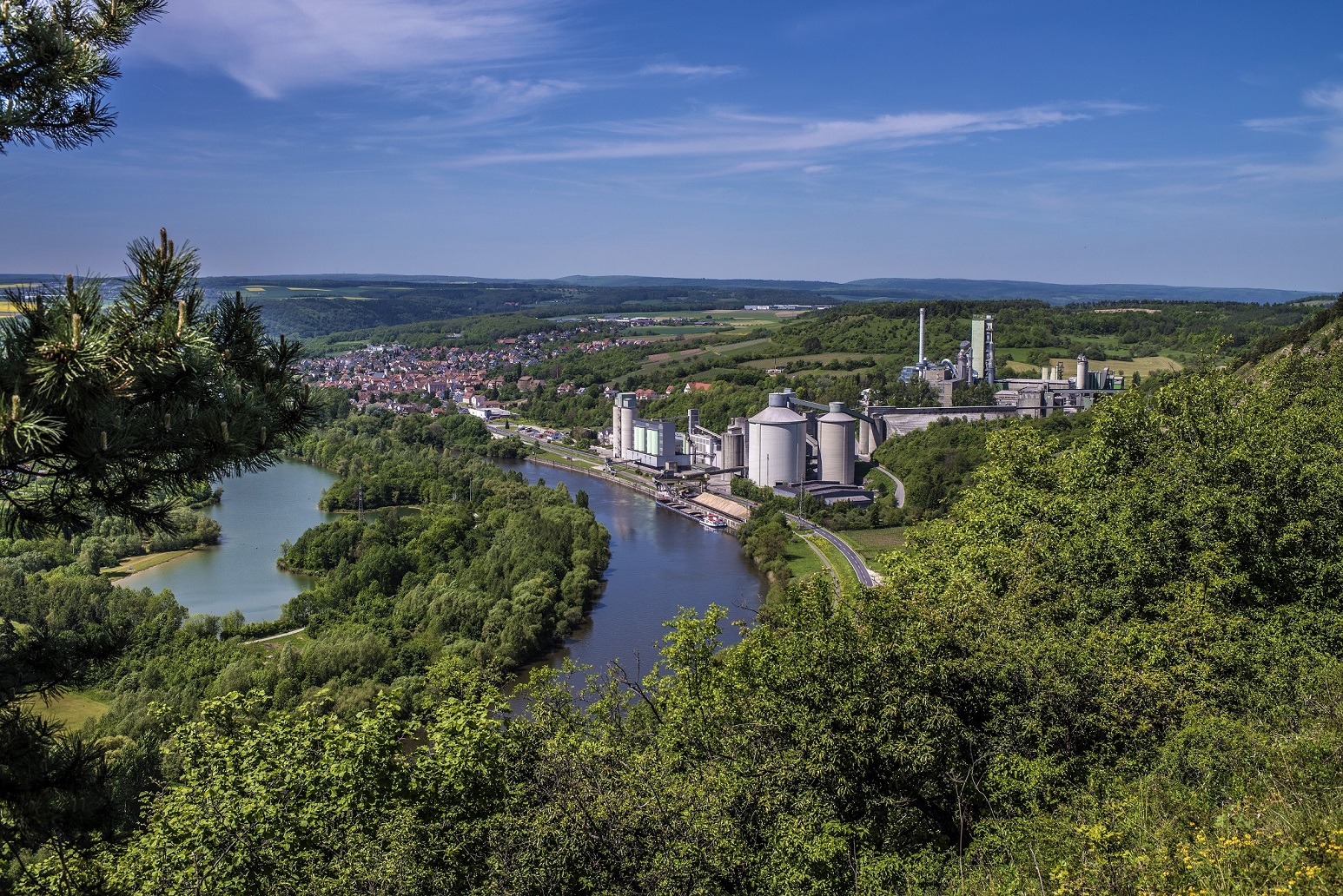
The world's first industrial-scale carbon capture and utilisation (CCU) facility in the cement industry is scheduled to start operations in 2025 at Heidelberg Materials' Lengfurt plant in Germany. The facility will enable the captured CO₂ from cement production to be reused as a valuable raw material in manufacturing applications. The planned volume of purified and liquefied CO₂ is around 70,000 tonnes annually.
Linde will market most of the CO₂ generated as part of the joint venture. Thanks to its purity, the processed gas can be used in the food and chemical industries, for example, in carbonated mineral water. Heidelberg Materials will use a smaller proportion to drive forward new CO2 recycling and recarbonation technologies.
For the implementation of this project, the substantial contributions of both partners will be supplemented by around €15 million from the Decarbonisation of Industry funding programme on behalf of the German Federal Ministry for Economic Affairs and Climate Action (BMWK).
"We are pleased to implement the world's first large-scale CCU project in the cement industry together with our partner Linde," says Dr Dominik von Achten, chairman of the managing board of Heidelberg Materials. "As part of our ambitious global CCUS strategy, we are currently driving forward a number of different industrial-scale carbon capture and utilisation projects. This way, we aim to identify viable and efficient ways to reduce our carbon footprint and reuse CO2. The project in Lengfurt is scheduled to go into operation as early as 2025. The BMWK funding shows the importance the German government attaches to our joint project."
"For our customers, a secure, high-quality supply of CO2 produced in a climate-friendly manner is of particularly high importance," says Dr Mathias Kranz, vice president On-Site & Bulk Linde, outlining the requirements for a CO2 supply. "With our partner Heidelberg Materials and the plant in Lengfurt, we will not only be able to expand our supply in the future but also provide CO2 in a sustainable and climate-friendly way with short transport routes."
"Climate protection is one of the most urgent challenges our industry is facing," says Jürgen Nowicki, executive vice president Linde and CEO of Linde Engineering. "With this joint venture, two global leaders in their field are combining their expertise to create a solution that is as sustainable as it is economical. This industrial-scale facility will pave the way for sustainable cement production following successful pilot applications."
The plant is being designed and built by Linde Engineering – one of the leading companies for CO₂ facilities. Based on an amine scrubbing system specially developed for flue gases, the carbon dioxide will be separated directly from part of the exhaust gas stream from the cement clinker kiln. Equipment for purification and liquefaction, tanks for intermediate product storage, and loading facilities are also part of the project scope.
Heidelberg Materials, the pioneer in carbon neutrality in its industry, has already successfully tested CO2 capture based on amine scrubbing technology on an extended laboratory scale at its Norwegian cement plant in Brevik between 2012 and 2016.
Linde brings to the joint venture its expertise in forward-looking, gas-based environmental technologies that allow customers worldwide to increase their productivity while reducing their environmental footprint.













